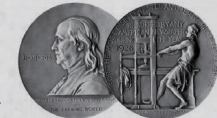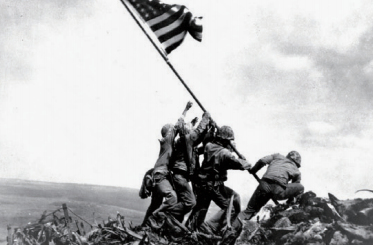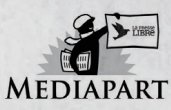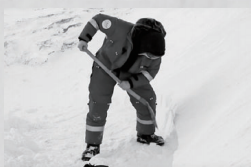Until March, the exhibition “Pulitzer Prize Photographs: Shooting the Pulitzer,” also known as the Nobel Prize of the journalism world, had been held at Seoul Arts Center. It gained popularity with people who were interested in photography. Photography has become a big part of our lives as the usage of the camera has become easier due to smartphones, and apps like Instagram are currently on-trend. Hence, the Sungkyun Times (SKT) will now introduce the concept of photojournalism, problems regarding it, and suggestions for improvement.
The Picture and Our Society
-The Advent of Photojournalism
Since Louis Daguerre invented the first publicly available photographic process in 1839, pictures have been used in many areas. In particular, news photos play an important role in the press, after their first use of pictures to report in the newspaper in 1915. It is because a photo can ensure the role of the press, informing of the truth with objectivity. Also, the invention of the compact commercial 35mm Leica camera in 1925 allowed photojournalists to take more realistic pictures. This is one of the major factors that led to ‘the Golden Age of Photojournalism’ in the 1930s and facilitated photos in newspapers and magazines. So, what is photojournalism? Photojournalism uses images, instead of writing, to tell a story or to supplement a newspaper report. Recently, this also refers to videos. When talking about photojournalism, the Pulitzer Prize cannot be missed because it focuses on photographic documentary evidence and showing reality. The Pulitzer Prize is an award for achievements in 19 areas, including literature, history, and journalism, and was established in 1917 by Joseph Pulitzer, known as the founder of modern journalism.

-The Power of Photojournalism
First, photojournalism can preserve social and historical records. John H. White, the recipient of a Pulitzer Prize in 1982, said, “Everyday we get a front seat of history. The Pulitzer is the mirror that shows it forever.” The Pulitzer Prize photos capturing World WarⅡ, the Vietnam War, and the September 11th attacks show important modern historical events. Through pictures, people can relive historical moments through a lens. Secondly, photojournalism captures the moment to represent a story, and this single photo can change the world. Like the idiom, “A picture is worth a thousand words,” there are many cases where pictures have brought changes. For example, the infamous picture of a girl screaming in agony, who was caught in the middle of a napalm attack during the Vietnam War, helped spread anti-war sentiment. Through this photo, the girl in the picture became an icon of the Vietnam War, and people could sympathize with the victims of the war. It is photographs like this that have the power to motivate people.
Problems Concerning Photojournalism
-Distortion of the Truth
A photograph shows “facts”; however, it can also be altered into another “truth” according to the photographer’s intentions, which is an act of manipulation. Some pictures are manipulated to reach a particular public opinion. They are edited to express reality in a dramatic manner or to represent another point of view. For instance, Raising the Flag on Iwo Jima was a picture of six Marines raising the United States flag on top of a mountain during the Pacific War, which boosted morale among the Americans; however, it was later revealed to have been manipulated. Particularly today, with an advanced technology where just a few clicks enable photos to be manipulated to the desired purpose, photograph manipulation has become much more accessible. Besides this, there are also problems not only while taking pictures but also during the choosing of pictures for public consumption. In news media organizations, the process of filtering information and determining articles exists. During this time, the news desk has a say in the direction of the photo section. This is because the news desk is related to corporations that advertise or support the press financially. As a result, a photographer considers more of the news desk’s point of view than their own when choosing pictures before confirmation.

-Ethical Dilemmas in Photojournalism
Though objectivity when taking a photo is important, the photographer’s ethics are also discussed significantly. Photojournalists perhaps face ethical dilemmas like whether or not to take a picture or to help people before them. Photographer Horst Faas said, “You must feel bad having to take pictures of a person’s death. But it is something that has to be done because we must let the world know what is going on here.” A case in point of photojournalism ethics is Kevin Carter’s The Vulture and the Little Girl, a photograph of a famine-stricken child who a vulture is eyeing nearby. This picture drew attention to Sudan’s horrific reality, leading to help aid African people on a large scale, and won the Pulitzer Prize in 1994. On the other hand, it triggered the controversy of ethics, and people criticized Carter’s callousness. Another controversial photograph was the picture presented in the article of a December 2012 issue of New York Post. At a New York subway station, a Korean man was pushed onto the tracks by an agitated panhandler. R. Umar Abbasi, a freelance photographer who was there at that moment, took the picture just before the train hit the man, and it was subsequently published in the New York Post. As a consequence, the ethics behind photography raises constant concerns.

Steps towards Better Photojournalism
-The Need for Responsibility in Photojournalism
As a photograph can be used for a specific group’s purpose, the value of photojournalism is at risk. To resolve this, a photographer should be mindful while taking pictures. Photographers should remember that readers have the right to know and see; thus, they should avoid taking intentionally manipulated pictures. Also, they should notice the impact of the pictures taken by them and try not to harm the objectivity of the photo. Moreover, objectivity is required during the photo selection process. Like the case of Médiapart, an independent French journal operated solely by subscription fees, the process of choosing pictures can be changed through the attempt to separate the press and the capital. Applying an Artificial Intelligence (AI) system in the initial stages can also help get objectivity. Suppose a photographer chooses among the photos selected by AI. In this case, there is little chance to report one-sided pictures and further regain journalism’s credibility.

-Morality and Reality, Killing Two Birds with One Stone
For photojournalists, an ethical dilemma is still a complicated problem to solve. Nevertheless, efforts to resolve it are needed. They should reject excessive obsession with trying to get ‘exclusives.’ Umar Abbasi’s case, which let the person die for his desire to take photos, should not be repeated. The photojournalist should perhaps consider it is a photographer’s duty to take pictures; however, a person’s life should be prioritized. Moreover, they should make efforts to balance between taking photos and acting morally. In 2020, the BBC documentary film crew stepped in to help penguins in danger, which was an unprecedented act. Even though the general principle is not to intervene in nature directly, more photographers should prioritize morality. Furthermore, taking pictures in a group with over two photojournalists might help to make a balance in morality and presenting reality. When faced with such situations, one photographer can offer minimum help while the other takes pictures of the overall process. In this way, readers can recognize the problematic situation, and the ethical criticism of the photographer can be reduced. Along with these efforts, changes in the reader’s mind are also important. Readers should understand that the photojournalist’s role is to show social problems to the public and avoid excessive moral criticism toward them.

Since the advent of the social network, photos are shared with the world almost instantaneously. The influence that one photo can hold has become more powerful. Some photojournalists even describe it as a “democracy of image.” Thus, it is desirable for both photographers and the public to consider the impacts of their photos when taking pictures.
